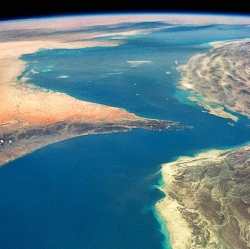
Many People are becoming more concerned with the growing issue of climate change, and there are many proposals as to how to deal with climate destabilisation. One of the projects focuses on Using Bubbles in space to reduce light from the sun, with the intention of protecting the Earth from too much warming. This is a different type of geoengineering project, from the MIT Senseable City Lab. Here is PTN’s interview to give an overview of the projects aims and future: Their website is: https://senseable.mit.edu/space-bubbles/
Can you briefly explain and summarise the aims of the project?
There is a growing scientific consensus that global warming is accelerating. The Earth-based strategies we have developed thus far might not be enough, despite the significant political and economic push. We must consider that perhaps we are past the tipping point and are facing an impending climate crisis. Space Bubbles was designed to supplement the existing Earth-based solutions.
What are the biggest benefits of this method compared to others?
Solar geoengineering is a set of technologies aiming to reflect a small fraction of sunlight that reaches the Earth. The main benefit of solar geoengineering – as opposed to Earth-based geoengineering method such as dissolving gases in the stratosphere to increase its albedo effect – is that it does not directly interfere with Earth’s biosphere, thus it poses less risk of altering our already fragile ecosystems. Additionally, the bubbles themselves set this method apart from others. If the raft is no longer needed, it is easy to destroy the thin sheets of bubbles by breaking their surface equilibrium.
What are your biggest obstacles, bottlenecks and challenges moving forward?
What are the plans moving forwards, how are you planning to implement this, what are the next steps and the timeline to making this a reality?
Will you do a proof of concept first before the big structure
Right now, we are seeking early-stage funding to prototype the production of space bubbles in real-world conditions by deploying a small machine on a CubeSat. Once we pass this step, we anticipate the need for strong intergovernmental cooperation and unprecedented international collaboration between political entities, research institutions, and private agencies, which we deem to be the major challenge of implementing the project.
Do you foresee issues with micrometeorite impacts or similar issues?
To address the anticipated gradual depletion of the shield, we are studying the replenishment rate of the solar bubbles in-situ. The ability to repair the shield by producing more bubbles, or to destroy the shield by popping the spheres, makes our approach much more efficient than the previously proposed technologies – and also safer as it is fully reversible.
Are you talking with launch providers? Any ideas on which of these you want to partner with? Where do you anticipate the funding for this will be coming from?
We are currently in touch with several high-profile research institutions, industry representatives, and potential investors, and also receive numerous questions and applications. We will report on our expanded partnership network in the next iteration of the project.
Given that the global climate changes over time and through history, human activities or not, what is your goal exactly, to create a world with a static climate system that is fully controllable?
Absolutely not. We view Space Bubbles as a temporary solution that may provide us the much-needed time to mitigate the consequences of human-induced climate change and transfer to a sustainable economy. That is, the goal of the project is a return to the natural climate balance rather than a total control of the climate.
Do you think you will need global/government support to achieve this? What issues pertaining to governments and the international community do you anticipate?
The first major issue is funding. The past few decades have shown major challenges in intergovernmental effort to combat climate change, which is exactly what inspired us to develop Space Bubbles. Our solution, on the other hand, poses a single and clear goal which should be easier to negotiate. Because of the potential wobbling of the shield, the general cooling effect we anticipate will be fairly equal between different regions of the world. However, the relative gains and losses from Space Bubbles, as well as each country’s financial commitment are major questions to explore.
What other solutions might be needed in conjunction with this to tackle climate change issues? removing CO2, or using drones to reforest an enormous amount of trees?
All of them! The Space Bubbles is not a solution to climate change, but rather a means for buying critical extra time to mitigate the effects of global warming and transition to a more sustainable system globally.
